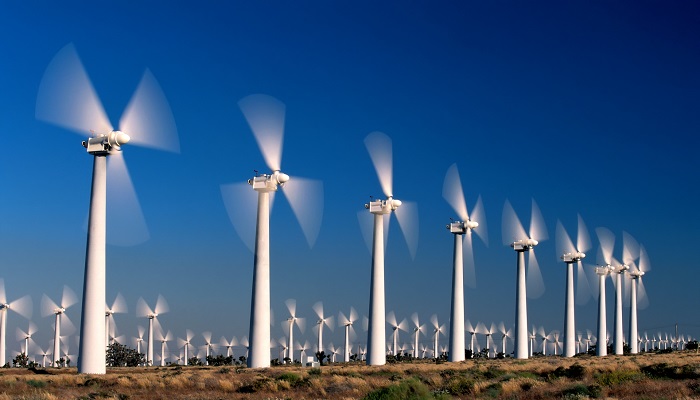Changes forced by Covid-19 may mean the global energy mix has permanently shifted in favour of lower-carbon fuels—if governments decide to support the progress, says Engie’s Laurent Nery
Laurent Nery is head of global energy market analysis for Engie. He works in the global energy management (GEM) business unit that manages energy supply and risks. GEM has a team of more than 40 analysts and economists following energy markets around the world, from renewable power to oil and coal.
Among a range of services, Engie GEM sets up power-purchase agreements (PPAs) that offer a fixed price to developers of renewable projects and buyers a secure long-term source of green power. It structures PPAs in many areas of Europe and, increasingly, the rest of the world. It leverages its trading team to hedge large volumes on liquid capital markets.
There is a steady long-term trend for decarbonisation, but this year has been very volatile, to say the least. What are you seeing in the market?
We are facing a crisis on the energy market, even bigger than in 2008-09 after the financial crisis. Obviously, no one can be pleased by the economic slowdown and all the social consequences. But it is a great opportunity to take further steps to accelerate the transition.
Sometimes we need to be pragmatic and look for the easiest emissions reductions. For example, there is huge room for coal-to-gas switching. Even a great economy such as Germany is heavily reliant on coal and lignite, but they have passed a new law on coal phaseouts, which is definitely a good step. Natural gas will be the fuel of choice to enable a smooth transition, before we can think about a zero-carbon economy.
“[The pandemic] is a great opportunity to take further steps to accelerate the transition”
Around the world, policymakers face tough decisions. China still has more than 1,000GW of coal-fired power plants, and it could accelerate its transition—and to do it smoothly by using tools such as carbon pricing.
The price of European allowances for emitting CO₂ is climbing because there is increasing conviction in the markets that policymakers will take action to increase the price of carbon. And, thanks to these carbon markets, you can switch from coal to gas.

People talk about gas as a transition fuel for the next few decades. But do you think the tone is becoming more ambitious, moving to net-zero carbon sooner than previously planned?
It is very hard to talk about speed without also talking about costs. Moving too fast to an extreme position would face huge costs. I hear people talk against natural gas, as a fossil fuel, but consumers need energy when there is no wind or solar. Natural gas is the best ally of renewables as it manages intermittency.
Natural gas will remain the cheapest alternative, probably for the next ten years, while we wait for a technological way to balance the energy system over the year at a reasonable cost.
But even if [governments print and widely distribute] ‘helicopter money’, at some point you need to find a system that is economically sustainable.
Do you think the commitments in the various green deal or green recovery plans is enough to accelerate the transition?
I hope that we will take this opportunity to allocate money to the solutions that will truly facilitate it. There will be money at the European and national levels, and there will be a lot of politics behind the scenes. We do not know whether it will be a success—but we hope.
These plans typically rely on leveraging a lot of private investment. Will companies be willing to put up the required money?
Not every company will be eager to invest, so we need to let competition set the way. A lot of projects would benefit from subsidies being brought to the table. But there is a big risk that we put money into the wrong technology. I hope that there will be enough room to let industrial companies push for what they believe are the best solutions. Carbon pricing rules will make a big difference—companies will make different choices if the carbon price is €40/t or €5/t.
What is your forecast for carbon prices?
The current system will lead to an oversupply of allowances because there will be, with this crisis, less demand for CO₂. Producing much less CO₂ may be good in the short term but, with less demand and flat supply, there is a risk the carbon price decreases. Policymakers could set a more ambitious cap and remove supply, which would send a signal that the emissions market is going to become tighter.
The German EU presidency is for six months, and they are clearly pushing for support for carbon prices. The market is clearly waiting for political signals to be able to reassess the value of emissions.
If carbon prices fall, is there a danger of the transition regressing?
Carbon prices are above the level they were before the crisis [but this is only because] people are building in huge expectations for the market to tighten. It is an opportunity to replace some coal with natural gas—with the prices of CO₂, gas and coal at these levels, gas is definitely more economic for power generation.
If all countries implement carbon prices, it would have a huge effect on emissions. Given all the gas reserves and investments already made, we could have a win-win where people do not pay too much for their energy and coal is moved out of the power mix.
How do you anticipate the price of gas evolving over the next few years?
It is complicated, but for supply it is quite clear. The first wave of US LNG terminals is coming to an end. By the end of 2020, there will only be one or two remaining liquefaction trains under construction. Between 2021 and 2023-24, liquefaction capacity remains stable.
1,000GW – Chinese coal capacity
If demand comes back, it could bring tension to balances at the end of 2022-23. And political choices in Asia—how fast Japan and South Korea move—could bring huge additional demand for gas. And that does not even factor in the 1,000GW of coal in China.
A lot of FIDs were taken last year. If these projects start producing by 2024-25, they would boost natural gas volumes until the end of the decade and temper gas prices.
Financial tests always create boom-and-bust cycles in the gas industry. When gas prices are depressed, companies are reluctant. But if you invest now you should be thinking about prices in 2024-25, and by then there could be much more demand.
Oil companies have massively cut capex, and a lot of discoveries are not being developed. Do you see this lack of capex feeding through into high oil prices?
The big questions are by how much and how fast oil demand recovers. Oil producers seems able to keep on investing at $40-50/bl, but the most complex and expensive projects may not be developed. Whether the world continues to rely on oil products—for how long, and across which sectors—is a more complex question. Air travel may be affected for a long while. Oil majors are clearly focusing on gas and power, and transitioning away from oil capex.
Transition-led oil demand destruction may kick in before energy demand recovers. May we have passed peak oil?
Peak oil will be determined by demand. If people decide they want to keep using oil at very high levels, this would just create a higher price for oil and lead to it being taken out of the ground in many more places. If so, peak oil would be in many years. Many people have decided that we need to reduce oil use. But a lot of people on earth still need oil to improve their way of life—so it is a bit tough to tell them that they cannot use it and even more difficult to impose this.
Investors are becoming less willing to support oil production and many that invested in shale have had their fingers burned. Could financing become difficult?
If they are offered 5-7pc on an investment that is not good for the planet they may not want it. But if they were offered 15pc, what would they do? The way these markets can rebalance is for it to become too expensive to develop new resources.
Source: Petroleum Economist









jmh7np
Your point of view caught my eye and was very interesting. Thanks. I have a question for you.